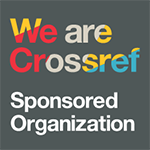Evaluation of the possibility of using dynamic indentation of gypsum boards to determine the degree of thermal damage to structures received under fire conditions
DOI:
https://doi.org/10.33408/2519-237X.2023.7-2.164Keywords:
inspection of the fire site, gypsum board, thermal damage, shock-pulse method, seat of fireAbstract
Purpose. To determine the applicability of dynamic indentation of gypsum boards to assess the degree of thermal damage to structures under fire conditions. To highlight the main characteristics of equipment for indentation of gypsum boards used as fire protection of building structures.
Methods. Laboratory studies of samples of gypsum boards in the chamber electric furnace under temperature exposure. Dynamic indentation. Full factorial experiment.
Findings. The possibility of using dynamic indentation of gypsum boards to assess the degree of thermal damage to structures made with their use. It is shown that to determine the change in dynamic hardness due to thermal damage to the specified material, the use of cylindrical indenters is more preferable than conical indenters. Based on the results of a full factorial experiment, the mathematical model was obtained that describes the change in the depth of indentation of a steel cylindrical indenter into a gypsum board depending on its cross-sectional area, the compression force of the spring of the accelerator, the temperature value and the heating time of the material. The technical characteristics of the equipment intended for the introduction of the indenter into the researched material by creating a shock pulse (the cross-sectional area of the cylindrical indenter 12.6 mm2; the compression force of the accelerating device spring 130 N) were determined.
Application field of research. The obtained research results can be applied in the development of technical means for determining the degree of thermal damage to structures made of gypsum boards obtained under fire conditions.
References
Cheshko I.D. Tekhnicheskie osnovy rassledovaniya pozharov [Technical basis of fire investigation]: methodical manual. Moscow: VNIIPO EMERCOM of Russia, 2002. 330 p. (rus)
Volosach A. V., Gorovykh O. G. Rezul'taty eksperimental'nykh issledovaniy poverkhnostnoy tverdosti yacheistykh betonov, podvergshikhsya temperaturnomu vozdeystviyu, indentorami s uglami rastvora konusa 20–55° [Results of experimental researches of surface hardness of cellular concretes exposed to temperature by indentors having 20–55° angles of cone opening]. Journal of Civil Protection, 2019. Vol. 3, No. 1. Pp. 13–22. (rus). DOI: https://doi.org/10.33408/2519-237X.2019.3-1.13. EDN: https://elibrary.ru/YZVGBF.
Taubkin I.S., Opredelenie temperatury i dlitel'nosti goreniya drevesiny na pozhare po parametram obuglennogo sloya: metodicheskie rekomendatsii [Determining the temperature and time of wood combustion from char layer parameters: methodological guidelines for fire investigators]. Theory and Practice of Forensic Science, 2017. Vol. 12, No. 4. Pp. 37–43. (rus). DOI: https://doi.org/10.30764/1819-2785-2017-12-4-37-47. EDN: https://elibrary.ru/YLXHSK.
Surikov A.V., Zaynudinova N.V., Boyko V.P. Perspektivnye metody otsenki stepeni poluchennykh v usloviyakh pozhara termicheskikh povrezhdeniy konstruktsiy, vypolnennykh s primeneniem gipsovykh plit [Promising methods for assessing the degree of thermal damage obtained under fire conditions made with the application of gypsum boards]. Journal of Civil Protection, 2022. Vol. 6, No. 4. Pp. 400–414. (rus). DOI: https://doi.org/10.33408/2519-237X.2022.6-4.400. EDN: https://elibrary.ru/ZYWQWU.
Ngu, Chu Nguong. Calcination of gypsum plasterboard under fire exposure: fire engineering research report 04/6 May, 2004. Department of Civil Engineering of University of Canterbury, Christchurch, New Zealand. 127 p. DOI: https://doi.org/10.26021/1689.
Mann D.C., Putaansuu N.D. Studies of the Dehydration / Calcination of Gypsum Wallboard. Proc. 11th Conference and Exhibition «Fire and Materials 2009», San Francisco, California, USA, January 26–28, 2009. UK, London: Interscience Communications Ltd, 2009. Pp. 827–838.
Mealy Ch.L., Gottuk D.T. A Study of Calcination of Gypsum Wallboard. Proc. 5th International Symposium on Fire Investigation Science and Technology. USA, Sarasota, 2012. Pp. 427–438. Url: https://www.nafi.org/blog/a-study-of-calcination-of-gypsum-wallboard/.
Botyan S.S., Zhamoydik S.M., Kudryashov V.A., Nguen T.K. Eksperimental'no-raschetnaya metodika otsenki teplofizicheskikh kharakteristik stroitel'nykh materialov s ispol'zovaniem kamernoy elektropechi dlya resheniya zadach ognestoykosti [Experimental-computing technique of evaluating thermophysical properties of building materials with a muffle electric furnace for solving fire resistance problems]. Journal of Civil Protection, 2020. Vol. 4, No. 1. Pp. 5–19. (rus). DOI: https://doi.org/10.33408/2519-237X.2020.4-1.5. EDN: https://elibrary.ru/BNQIRI.
Zehfub J., Sander L. Gypsum plasterboards under natural fire – Experimental investigations of thermal properties. Civil Engineering Design, 2021. Vol. 3, Iss 3. Pp. 62–72. DOI: https://doi.org/10.1002/cend.202100002.
Guide for Fire and Explosion Investigations: NFPA 921. The Technical Committee on Fire In-vestigations. Massachusetts, Quincy: National Fire Protection Association, 2017. 426 p.
Published
How to Cite
License
Copyright (c) 2023 Surikov A.V., Zaynudinova N.V., Boyko V.P., Garaev Yu.V.

This work is licensed under a Creative Commons Attribution-NonCommercial 4.0 International License.




















